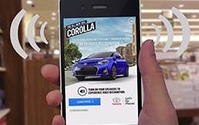Mobile Is The Best Driver of Ad Receptiveness
- by Steve McClellan @mp_mcclellan, September 29, 2014
 If
advertisers can get their ads in front of consumers when they’re attentive and receptive to receiving messages, brand performance is likely to improve.
If
advertisers can get their ads in front of consumers when they’re attentive and receptive to receiving messages, brand performance is likely to improve.
That’s a key takeaway from new research unveiled today by the IPG Media Lab and YuMe, the digital video company. While that conclusion may seem self-evident, getting ads in front of the right people at the right time has often proved easier said than done.
The research found that consumers are most receptive to ads on mobile devices. Receptivity was 30% greater on a smart phone than via cable TV, per the research. By location, the study found that receptivity is significantly better away from home.
Mobile devices were also found to be strong drivers of attention—message recall on smart phones averaged 41%. Also, greater attentiveness drives brand favorability, purchase intent and recommendation intent.
advertisement
advertisement
The research found that attentiveness to messaging seems to be higher during the daily commute, at a store or at work.
“Starting with the initial findings of this research, clients may soon have the ability to strategically target attentive audiences to increase brand performance,” says Paul Neto, Director of Research, YuMe. “Looking at the research alone, it seems likely that attention will be a valuable metric to measure digital video advertising effectiveness moving forward.”
Added Melvin Wilson, Head of Strategy, IPG Media Lab. “Measuring receptivity and attention can help us analyze and drive brand performance in new impactful ways for this industry.”
More on the research and the methodology used to conduct it can be found here.



With mobile devices advancing and increasing in demand many people communicate on a daily basis if not all the time on these types of devices. Everyone has also gotten so used to checking their devices very constantly throughout the day. Anyone will interrupt whatever they are doing in order to check out daily updates on facebook, or the pictures friends posted on instagram, or even if they have any text messages. As a result of this, many people pay more attention to their phones than daily tasks. If there was a way in which you can advertise directly to people in these methods yes it would be very affective.
For example, on my facebook for some reason I follow a certain news channel and other sources of news. Well these cites always have information that surprises me and keeps me well informed. Without these sites sharing information I would never know about certain updates that happen throughout the day. Same thing with ads if they would for some reason pop up on my phone and be informed about a certain thing that is promoted obviously I would pay more attention to it.
The only problem is how to present an ad to someone because you can't force and ad to someone's phone. Presentation is the main way to focus on. One knows the main thing that grabs the attention of the people. Now it is just how to put those ads in front of the people.
Too bad the research did not look into ad load. The fact that mobile has a lower ad load is a likely factor in driving more attentiveness.